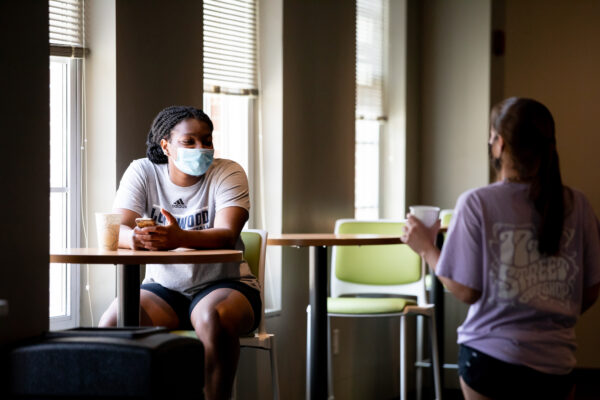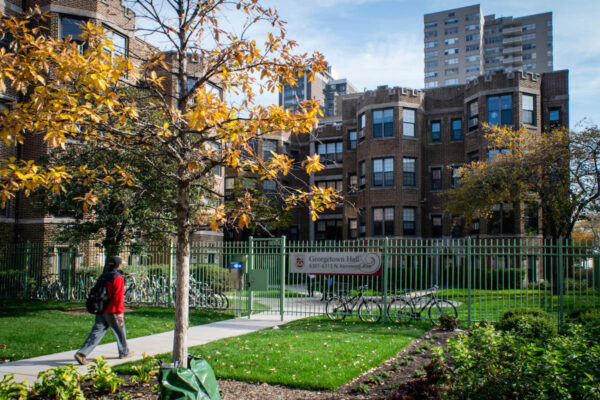By Suzanne Wilson Summers
Suzanne Wilson Summers is writing about her year in the ACE Fellows Program in a series of posts on how community colleges can build internal cultures that support student success. Read her first post here.
Rural community colleges represent over 3.4 million students spread across 800 campuses nationwide and serve as “centers of educational opportunity,” according to the Rural Community College Alliance. Although they share many of the challenges that urban and suburban institutions face in the response to COVID-19, these are amplified by geography, distance, and economic and social conditions.
Uneven access to broadband and technology, high rates of poverty, and a lack of alternative employment for the unemployed; the need to provide skills training in educational deserts; and tight budgets in a sector that is chronically underfunded—these are the forces that have shaped rural community colleges’ response to the pandemic. Yet despite these challenges, an informal survey of rural institutions indicates that this is not a story of defeat, but one of creativity and commitment in serving students and local communities. As President John J. Rainone of Dabney S. Lancaster Community College (DSLCC) in southwestern Virginia said, “We’re building this plane as we’re flying it, and things change hourly.”
Spanning the digital chasm
The rapid move to remote learning has highlighted unequal access to broadband and technology as a critical factor in student retention and completion. In some rural areas, the digital divide could be more accurately described as a digital chasm, making community colleges the digital providers of last resort. Students in urban areas may have multiple access points to broadband, but in many geographically remote communities, Wi-Fi and cell service is spotty, unavailable, or simply unaffordable. So, rural colleges have worked with other public institutions, such as public libraries, to ensure broadband access for students by extending Wi-Fi coverage to campus and library parking lots, Rainone said.
Without access to computers and adequate cell plans, students’ default response may have been to drop courses. Both White Mountains Community College and Lake Region Community College, institutions of the Community College System of New Hampshire, sought to keep students enrolled after it became clear that they would not be able to keep their computer labs open, Presidents Charles Lloyd and Larissa Baia said. Like their counterparts around the country, these community colleges loaned laptops and purchased data plan upgrades so that students could use their cell phones to complete assignments. Rural community colleges in Colorado, California, and Kentucky, faced with similar circumstances, purchased mobile hotspots for students to provide them with internet access.
However, as ACE President Ted Mitchell and WASC Senior College and University Commission President Jamienne Studley said recently in The Hechinger Report, while college leaders are doing their best, it’s not always enough. They mention the Supporting Connectivity for Higher Education Students in Need Act, newly introduced in Congress, which would provide financial support for institutions to help students get and stay connected. Older options already out there include the Universal Service Fund, which helps K-12 schools and public libraries address technology infrastructure needs, including broadband access. Mitchell and Studley suggest expanding this program to serve as another resource for broadband-insecure college students—which is what DSLCC seems to already have done.
Transitioning to remote offerings
While many urban and suburban institutions offered online courses prior to the pandemic, not all rural community colleges had robust online programming.
Quality online course offerings are expensive to develop and have higher failure and lower retention rates among community college students than classroom instruction, according to a 2013 study by the Community College Research Center at Teachers College, Columbia University. Students at community colleges are more likely to be first-generation college students and to want the support and sense of community in classroom instruction. These factors have contributed to faculty and institutional reluctance to embrace online instruction.
By the start of the spring semester, for instance, New Hampshire’s Lakes Region Community College had just begun to develop four fully online programs. The pandemic accelerated that shift to online learning across the college. In Colorado, by contrast, while individual colleges might offer a limited number of online courses, students could earn a degree by taking needed courses offered by all 14 member colleges through the statewide Colorado Community Colleges Online program, Chancellor Joe Garcia told me.
In March, as the pandemic deepened, rural community colleges confronted the need to move to courses online as quickly as possible. But few rural institutions have large teams of instructional designers and other support staff to facilitate the transition.
In places with statewide community college systems, such as California and Virginia, system assistance transitioning to remote instruction proved invaluable, but mostly, the herculean process of moving rapidly to remote learning fell on faculty. At Dodge City Community College in Kansas, President Harold Nolte said, newer faculty hires who had greater experience and comfort with online technology and pedagogy mentored their colleagues. Although faculty managed to make the transition, Chancellor Kristin Williams of the Kentucky Community and Technical College System cautioned that institutions need to recognize that after the rapid pace and scale of the move to remote instruction this spring, faculty may need a break before undertaking any online expansion for fall 2020.
Rural colleges as agents of economic redevelopment
Traditionally, rural community colleges have served a critical role in local economic development by offering workforce training and encouraging degree and credential attainment. College leaders recognize that this function will grow in importance as unemployment accelerates to record rates.
The lack of alternative employment opportunities and social services makes the threat of layoffs doubly consequential to rural communities, while limited medical care adds to the worries of campus leaders over the pandemic’s impact. Places like the White Mountains in northern New Hampshire, for example, have been especially hard hit as tourism and hospitality, the driver of the local economy, has dried up, reported White Mountains President Charles Lloyd. This has led colleges like his to work with local businesses in identifying training and development needs.
Providing the kinds of career skills training that can lead to individual mobility and economic development in rural areas, programs such as welding, construction, EMT training, and nursing, represent an important part of community and technical colleges’ mission. Many of these programs require hands-on training in the form of labs and clinicals in order for students to earn needed certifications. So, colleges have worked with state agencies and accreditors in a range of ways in order to continue training.
The state of California, for instance, granted permission to allow students going into critical infrastructure jobs to continue needed training while employing social distancing. Similarly, students in diesel mechanics and welding programs at Dodge City Community College received state permission to continue hands-on training while following safety guidelines. Senior nursing students at Dabney S. Lancaster Community College are completing their clinical requirements virtually. President Baia of Lake Region Community College in New Hampshire suggested that given the possibility of the reappearance of COVID-19, accreditors will need to demonstrate flexibility in the event that traditional clinical or lab requirements cannot be met.
Maintaining community, connection, and care
For students whose lives have been upended by COVID-19, the level of uncertainty and anxiety is considerable. A recent study found that 80 percent of students in the United States reported negative mental health effects due to the pandemic. In rural areas, where social and mental health services are scarce and, in some cases, are beginning to experience hot spots, this number may be higher. Leaders of rural community colleges are responding through regular communications, call campaigns, and emergency aid trying to ease concerns.
For example, Dabney S. Lancaster Community College is working hard to communicate weekly with students and holding bimonthly online forums for students to share their concerns and to ask questions. With an enrollment of approximately 1,000 students, academic coaches and advisors are reaching out by phone to check on students and to connect them to needed assistance. Presidents Larissa Baia and Charles Lloyd both emphasized the need for empathy, transparency, and regular two-way communications through a variety of means, such as Facebook Live sessions.
Some Kentucky institutions have used reallocated staff such departmental aides, now working remotely, to call students to offer help and to communicate care. Rather than trying to reach every student, they targeted students who now found themselves taking online courses for the first time. Additionally, the Kentucky Community and Technical College System operates a central call center for students across the state.
Conclusion
The unprecedented nature of the COVID-19 crisis has challenged higher education in profound ways. Yet, for rural community colleges, there is also cause for optimism.
President Charles Lloyd of White Mountains Community College sees this moment as a “great resetting for higher education.” Rural community colleges are working tirelessly and creatively to help their students complete their training so that they will be better positioned to thrive in whatever the “new normal” may prove to be. The affordability of community colleges may attract additional enrollments, particularly for students who seek or maintain local employment while in school. The historic commitment to student and community well-being, despite extreme challenges, serves rural institutions well.
If you have any questions or comments about this blog post, please contact us.


